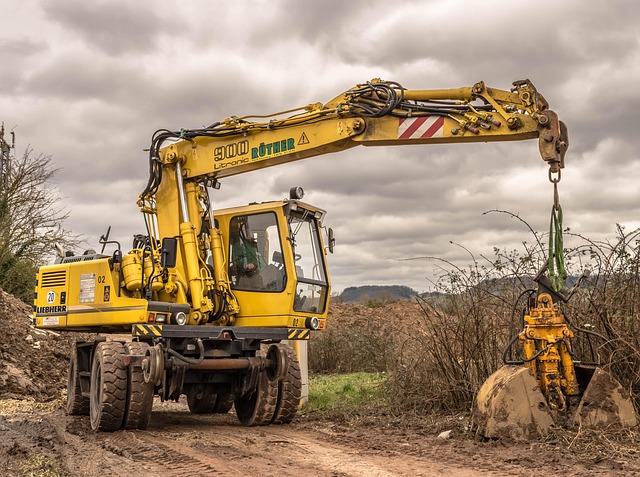In today's digital era, high-accuracy utility scanning is transforming infrastructure management in complex urban environments. This advanced technology offers precise identification of underground utilities through high-definition imaging and sophisticated software, ensuring detailed mapping. By minimizing damage risks during construction or maintenance activities, it supports the growth of a robust and resilient urban infrastructure network. Leveraging sensing technologies like GPR, EM, and LiDAR, high-accuracy utility scanning creates accurate digital twins, enhancing safety, efficiency, and decision-making processes while saving time, money, and resources. Future trends include AI integration, automated feature extraction, and drone-based imaging for faster, more precise, and environmentally friendly mapping.
In today’s digital era, precise infrastructure management is paramount. High-accuracy utility scanning emerges as a game-changer, offering exact utility line identification through advanced high-definition technology. This article delves into the understanding and benefits of this method, exploring how it enhances utility line identification and revolutionizes infrastructure management. From navigating labyrinthine landscapes to uncovering hidden remnants, high-accuracy scanning provides crucial insights, ensuring efficient maintenance and minimizing disruptions.
Understanding High-Accuracy Utility Scanning: The Need for Precision
In today’s digital era, high-accuracy utility scanning has become a game-changer in ensuring precise identification of underground utility lines. This advanced technology employs high-definition imaging and sophisticated software to create detailed maps of buried infrastructure. As urban areas continue to expand and development projects grow in complexity, the need for exact utility line location has become paramount. Accurate scanning is no longer a luxury but a necessity to prevent costly disruptions during construction or maintenance activities.
The precision offered by high-accuracy utility scanning plays a crucial role in navigating bustling metropolitan landscapes. By providing detailed data on pipe and cable layouts, this method allows professionals to work safely and efficiently below the surface. This technology supports informed decision-making, minimizes damage risks, and ultimately fosters a more robust and resilient urban infrastructure network.
How High-Definition Scans Enhance Utility Line Identification
High-definition scans revolutionize utility line identification by offering unprecedented accuracy and detail. Traditional methods often relied on manual inspection or lower-resolution imaging, leading to potential errors and delays. With high-accuracy utility scanning, professionals can now access comprehensive 3D models and detailed cross-sectional images of underground infrastructure. This advanced technology enables precise localization of pipes, cables, and other utilities, even in complex urban landscapes.
The enhanced visual data provided by high-definition scans significantly improves decision-making processes. It allows utility companies to plan maintenance, repairs, or new installations with greater efficiency, minimizing disruptions to nearby properties and infrastructure. Moreover, the ability to accurately identify and map utility lines reduces the risk of damage during excavation projects, ensuring safer working conditions for construction teams and preventing costly mishaps.
Benefits of High-Accuracy Scanning for Infrastructure Management
High-accuracy utility scanning offers significant advantages for infrastructure management, ensuring that critical underground utilities are identified and mapped with meticulous precision. This advanced technology employs high-definition imaging and sophisticated software to deliver detailed digital representations of buried lines, pipes, and cables. By utilizing these accurate scans, maintenance teams can significantly reduce the risk of damaging valuable assets during excavation projects.
Moreover, high-accuracy scanning enhances safety by providing real-time data that aids in informed decision-making. This technology allows professionals to pinpoint utility locations exactly, enabling them to plan excavations and construction projects efficiently. As a result, potential risks are minimized, saving time, money, and resources while ensuring the integrity of essential services.
Best Practices and Future Trends in Utility Line Mapping Technology
The evolution of utility line mapping technology is driven by a relentless pursuit of precision and efficiency. High-accuracy utility scanning has become a game-changer, offering detailed and accurate representations of underground infrastructure. Best practices in this field emphasize the importance of integrating multiple data sources, including ground penetration radar (GPR), electromagnetic induction (EM), and LiDAR, to create comprehensive digital twins of urban landscapes. By combining these advanced sensing technologies, professionals can achieve remarkable accuracy in identifying and mapping utility lines, pipes, and cables.
Looking ahead, future trends in utility line mapping are poised to revolutionize the industry further. The integration of artificial intelligence (AI) and machine learning algorithms promises enhanced data processing capabilities, enabling automated feature extraction and classification. This not only accelerates project timelines but also reduces human error. Additionally, the advent of drone-based high-resolution imaging and advanced data analytics will enable more accessible and efficient inspections, especially in hard-to-reach areas. These innovations collectively point towards a future where utility line mapping is faster, more precise, and environmentally friendly.
High-accuracy utility scanning is transforming infrastructure management by providing exact utility line identification. Through advanced high-definition scans, organizations can now accurately map and locate critical utility lines, leading to more efficient maintenance, reduced disruptions, and improved safety. As technology advances, adopting best practices and staying informed about future trends in utility line mapping will be essential to maximize the benefits of high-accuracy scanning for years to come.
